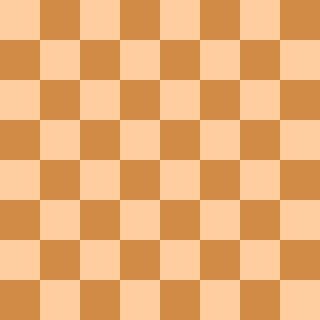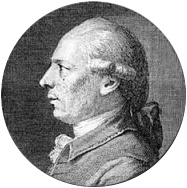Zugzwang is a situation found in chess and other turn-based games wherein one player is put at a disadvantage because of their obligation to make a move; a player is said to be "in zugzwang" when any possible move will worsen their position.
In the game of chess, an endgame study, or just study, is a composed position—that is, one that has been made up rather than played in an actual game—presented as a sort of puzzle, in which the aim of the solver is to find the essentially unique way for one side to win or draw, as stipulated, against any moves the other side plays. There is no limit to the number of moves which are allowed to achieve the win; this distinguishes studies from the genre of direct mate problems. Such problems also differ qualitatively from the very common genre of tactical puzzles based around the middlegame, often based on an actual game, where a decisive tactic must be found.

Stalemate is a situation in the game of chess where the player whose turn it is to move is not in check but has no legal move. The rules of chess provide that when stalemate occurs, the game ends as a draw. During the endgame, stalemate is a resource that can enable the player with the inferior position to draw the game rather than lose. In more complex positions, stalemate is much rarer, usually taking the form of a swindle that succeeds only if the superior side is inattentive. Stalemate is also a common theme in endgame studies and other chess problems.

The Lucena position is one of the most famous and important positions in chess endgame theory, where one side has a rook and a pawn and the defender has a rook. It is fundamental in the rook and pawn versus rook endgame. If the side with the pawn can reach this type of position, they can forcibly win the game. Most rook and pawn versus rook endgames reach either the Lucena position or the Philidor position if played accurately. The side with the pawn will try to reach the Lucena position to win; the other side will try to reach the Philidor position to draw.

Checkmate is a game position in chess and other chess-like games in which a player's king is in check and there is no possible escape. Checkmating the opponent wins the game.

The two knights endgame is a chess endgame with a king and two knights versus a king. In contrast to a king and two bishops, or a bishop and a knight, a king and two knights cannot force checkmate against a lone king. Although there are checkmate positions, a king and two knights cannot force them against proper, relatively easy defense.
Triangulation is a tactic used in chess to put one's opponent in zugzwang. Triangulation is also called losing a tempo or losing a move.

The Philidor position usually refers to an important chess endgame which illustrates a drawing technique when the defender has a king and rook versus a king, rook, and a pawn, though it can also refer to a position in the queen versus rook endgame or a position in a rook and bishop versus rook endgame. In the case of a rook and pawn versus a rook, it is also known as the third rank defense, because of the importance of the rook on the third rank cutting off the opposing king. It was analyzed by François-André Danican Philidor in 1777. Many rook and pawn versus rook endgames reach either the Philidor position or the Lucena position. If played accurately the defending side tries to reach the Philidor position; the other side tries to reach the winning Lucena position. Some consider this to be one of the most important positions in endgame theory".
The chess endgame with a king and a pawn versus a king is one of the most important and fundamental endgames, other than the basic checkmates. It is an important endgame for chess players to master, since most other endgames have the potential of reducing to this type of endgame via exchanges of pieces. Players need to be able to determine quickly whether a given position is a win or a draw, and to know the technique for playing it. The crux of this endgame is whether or not the pawn can be promoted, so checkmate can be forced.
In chess, the fortress is an endgame drawing technique in which the side behind in material sets up a zone of protection that the opponent cannot penetrate. This might involve keeping the enemy king out of one's position, or a zone the enemy cannot force one out of. An elementary fortress is a theoretically drawn position with reduced material in which a passive defense will maintain the draw.

The bishop and knight checkmate in chess is the checkmate of a lone king which can be forced by a bishop, knight, and king. With the stronger side to move and with perfect play, checkmate can be forced in at most thirty-three moves from any starting position where the defender cannot quickly win one of the pieces. The exception is the "stalemate trap". These exceptions constitute about 0.5% of the positions. Checkmates are possible with the defending king on any square at the edge of the board, but can be forced only from positions with different material or if the defending king is in a corner controlled by the bishop or on a square on the edge next to a corner, but mate adjacent to the corners not controlled by the bishop is only two moves deep, so is not generally encountered unless the defending side plays inaccurately. Although this is classified as one of the four basic or elementary checkmates, it occurs in practice approximately only once in every 6,000 games.

The rook and pawn versus rook endgame is of fundamental importance to chess endgames, ,, , and has been widely studied, . Precise play is usually required in these positions. With optimal play, some complicated wins require sixty moves to either checkmate, win the defending rook, or successfully promote the pawn. In some cases, thirty-five moves are required to advance the pawn once.
In chess, opposition is the position in which two kings face each other on a rank or file, with only one square between them. Since kings cannot move immediately adjacent to each other, neither king can advance, creating a mutual blockade. In this situation, the player not having to move is said to "have the opposition". It is a special type of zugzwang and most often occurs in endgames with only kings and pawns. The side with the move may have to move their king away, potentially allowing the opposing king access to important squares. Taking the opposition is a means to an end and is not always the best thing to do.
The chess endgame of a queen versus pawn is usually an easy win for the side with the queen. However, if the pawn has advanced to its seventh rank it has possibilities of reaching a draw, and there are some drawn positions with the pawn on the sixth rank. This endgame arises most often from a race of pawns to promote.
Corresponding squares in chess occur in some chess endgames, usually ones that are mostly blocked. If squares x and y are corresponding squares, it means that if one player moves to x then the other player must move to y in order to hold his position. Usually there are several pairs of these squares, and the members of each pair are labeled with the same number, e.g. 1, 2, etc. In some cases they indicate which square the defending king must move to in order to keep the opposing king away. In other cases, a maneuver by one king puts the other player in a situation where he cannot move to the corresponding square, thus the first king is able to penetrate the position. The theory of corresponding squares is more general than opposition, and is more useful in cluttered positions.
The opposite-colored bishops endgame is a chess endgame in which each side has a single bishop and the bishops reside on opposite-colored squares on the chessboard and thus cannot attack or block each other. Without other pieces these endings are widely known for their tendency to result in a draw. These are the most difficult endings in which to convert a small material advantage to a win. With additional pieces, the stronger side has more chances to win, but not as many as when bishops are on the same color.
The rook and bishop versus rook endgame is a chess endgame where one player has just a rook, bishop and king, and the other player has only a rook and king. This combination of material is one of the most common pawnless chess endgames. It is generally a theoretical draw, but the rook and bishop have good winning chances in practice because the defense is difficult. Ulf Andersson won the position twice within a year, once against a grandmaster and once against a candidate master; and grandmaster Keith Arkell has won it 18 times out of 18. In positions that have a forced win, up to 59 moves are required. Tony Kosten has seen the endgame many times in master games, with the stronger side almost always winning. Pal Benko called this the "headache ending".
In chess endgames with a bishop, a pawn that is a rook pawn may be the wrong rook pawn. With a single bishop, the result of a position may depend on whether or not the bishop controls the square on the chessboard on which the pawn would promote. Since a side's rook pawns promote on opposite-colored squares, one of them may be the "wrong rook pawn". This situation is also known as having the wrong-colored bishop or wrong bishop, i.e. the bishop is on the wrong colored squares in relation to the rook pawn. In many cases, the wrong rook pawn will only draw, when any other pawn would win. A fairly common defensive tactic is to get into one of these drawn endgames, often through a sacrifice.

The Réti endgame study is a chess endgame study by Richard Réti. It was published in 1921 in Kagans Neueste Schachnachrichten. It demonstrates how a king can make multiple threats and how it can take more than one path to a given location, using the same number of moves. It is covered in many books on the endgame. The procedure is known as the "Réti Maneuver" or "Réti's Idea", ,. Endgame composer Abram Gurvich called the theme "The Hunt of Two Hares" and it appears in many other studies and games. It is also called "chasing two birds at once".

The queen and pawn versus queen endgame is a chess endgame in which both sides have a queen and one side has a pawn, which they are trying to promote. It is very complicated and difficult to play. Cross-checks are often used as a device to win the game by forcing the exchange of queens. It is almost always a draw if the defending king is in front of the pawn.




